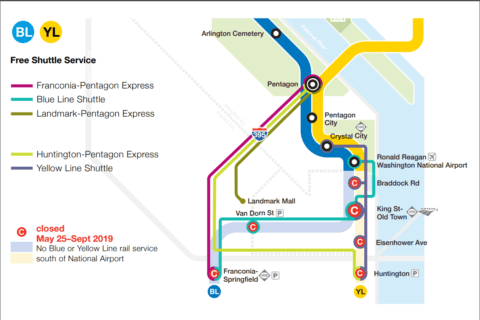Drivers in the D.C. region are preparing for a return to reality this week as post-Labor Day gridlock ushers in what is often called “Terrible Traffic Tuesday.”
“There is simply no avoiding this,” said AAA mid-Atlantic spokesman John Townsend. “It not only impacts people on freeways and highways, but every transportation mode in the Washington metro area.”
The Tuesday after Labor Day marks the time when the traditional summer lull in traffic congestion comes to an end.
That is especially true as Maryland students head back to school this week. Classes already started for students in D.C. and Virginia.
Also, six Blue and Yellow line Metro stations south of Reagan National Airport are scheduled to remain closed through Sunday, sending many would-be train commuters into vehicles.
“The peace and quiet we’ve enjoyed for the past two months will all dissipate,” Townsend said. “It becomes progressively worse each day in September.”
Commuters will see huge rush hour increases on the Capital Beltway, Interstate 270, Interstate 95, Interstate 66 and along the 14th Street Bridge over the Potomac River into the District.
According to AAA, the D.C. area routinely has the third-worst traffic congestion in the nation, causing each commuter to lose an average of 102 hours every year staring at brake lights.
About 1.9 million vehicles each workday travel on both sides of the Potomac River and across it in both directions in the nation’s capital.
And things have been getting markedly worse over the years.
For example, the portion of the Beltway that connects Virginia and Maryland across the Potomac River near National Harbor in Prince George’s County has witnessed an extraordinary increase in the daily total volume of vehicular traffic.
The number of vehicles traveling through that area daily has surged from 198,840 in 2012 to 235,022 in 2018. That’s an increase of more than 36,000 vehicles and marks an 18.2% growth in traffic volume.








